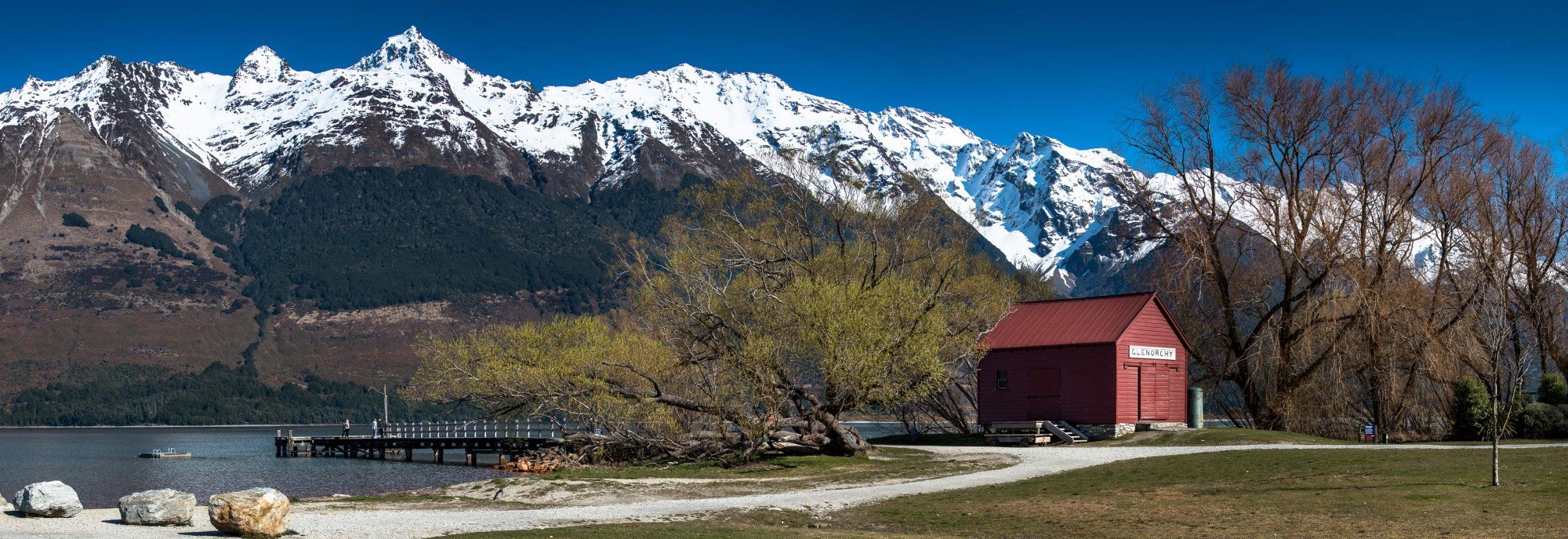- Accommodation


The site will feature a variety of elements that are designed to reduce effects on our local environment – including the air, waterways and soil.
We are exploring a number of design features to help us strengthen and highlight connections between Camp Glenorchy and its local natural and cultural surroundings.
Camp Glenorchy’s landscaping is being designed to reflect local geology, vegetation and culture.
Once construction is complete, the campsite landscape will be restored and regenerated with native tree species to support local species such as bees, birds and bats. Kowhai trees will welcome visitors to the camp while beech trees will protect its western margin, mimicking the surrounding forests. Complementary native plant communities will be used throughout the site.
A guiding theme in the Camp Glenorchy planting design is ‘if it’s not native, it’s edible’. On-site organic production of vegetables, fruits and herbs will supply the future café. The edible garden will become a learning opportunity for visiting families, schools and groups to see first-hand the entire food cycle and begin to think about how they can replicate it in their own homes and communities.

Connection to the Glenorchy community and landscape is embedded in Camp Glenorchy’s core. The relationship that locals have built with the surrounding environment has inspired the creation of a sustainable campsite that honors and seeks to enhance its beautiful backdrop.
Community input, interests and concerns have formed the foundation of our design thinking about Camp Glenorchy. A series of over 400 conversations with the community have helped us understand the needs of our neighbours, locals and visitors from around the world so that we can reflect their thoughtful input into the project.
 Throughout Camp Glenorchy, the buildings have been designed to echo the regional architecture and rural character of historic buildings in the area. Post–and-rail fences around the perimeter of the property will be built to reflect the look and feel of farmland fences in the area.
Throughout Camp Glenorchy, the buildings have been designed to echo the regional architecture and rural character of historic buildings in the area. Post–and-rail fences around the perimeter of the property will be built to reflect the look and feel of farmland fences in the area.
As part of our commitment to support others who are seeking to minimise their impact on the environment, Camp Glenorchy will provide electric car charging stations on site. Visitors will be able to charge electric cars using energy generated in our solar garden, turning their car’s battery into storage for the sun’s energy as an alternative to fossil-based fuels.
Our own site utility vehicles will be electric, and vehicles required for longer trips to and from Queenstown will be plug-in hybrids. We’re already using a hybrid vehicle for staff purposes at our General Store, next door.
Resiliency refers to the ability of buildings, services and the site to operate autonomously from municipally-provided services and recover quickly in the event of a natural disaster.
Camp Glenorchy is designed to act as a Civil Defence resource for the community, providing a place of safety and security in case of emergency. If the main electricity grid is unable to provide power, the site will be able to supply enough energy to power emergency lighting and all refrigeration equipment for a week.